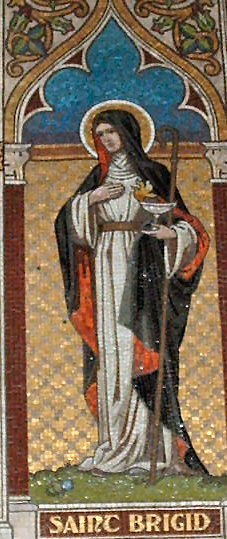Faughart today is best known for its shrine to Saint Bridget. The original ‘Calvary’ built there in the Marian Year became a place of pilgrimage for Catholics from all parts of
Fifty years later – in 1984 – the lower part of the Shrine was cleared and a new covered altar – and car park were built. To open it on St Bridget’s Day of that year, Cardinal Tomas O’Fiaich said a special Mass there, having first led a torch-lit procession from Faughart Graveyard.
Faughart Graveyard is said to be the site of St Bridget’s father’s house. She was born here in the fifth century. Her father was a druid chief called Dubtach and her mother was a slave called Brocessa, a Christian.
Bridget grew up in the Christian faith and was well-known for her kindness and her generosity. Her desire was to devote her whole life to helping people. With a few friends, girls of her own age, she went in search of a place to do their work. Near Drumcree overlooking the River Liffey and under a great spreading oak tree, they found such a place. Here they built a shelter – and later a Church – and the place became known as the Church of the Oak, or Cill Dara. It is still Kildare today. It was about the year 470 AD. In their convent they looked after the poor and the sick.
St Bridget died in Kildare in 523 and there her remains were laid to rest in a beautiful jewelled shrine within the church. However in the ninth century, when the Danes or Vikings began to ravage the country the body of Bridget was brought for safety to Downpatrick. It was buried in the grounds of the Cathedral, along with those of Saints Patrick and Columba.
Today a great slab of Mourne granite, with the name ‘Patric’ engraved on it, marks the spot.
Bridget’s head, however, rests in Portugal, in Lumiar, Lisbon at the S
